Updated: January 8, 2020
So. I decided I wanted (if not quite needed) a new test laptop. My arsenal of Linux-focused test hardware has been getting a bit long in the tooth, with two ancient machines now both 10+ of age, and the everyday laptop marching well into its sixth year. Buying a new mid-range box would give me exposure to some more recent technology, and allow me to fiddle with operating systems on a new level.
Thus, I purchased myself a Lenovo IdeaPad 3, a 14-inch FHD laptop. As it happens, it's not my first Lenovo, far from it, but it is my very first laptop with an AMD processor! This should make the whole endeavor quite interesting. To make things even spicier, it comes with AMD Radeon Vega 8 graphics - my second only machine with AMD graphics, after an old T42 a decade back. Double whammy, then. The main idea is to use this laptop for various everyday usage scenarios - Windows and Linux testing. And we ought to do that right away. Indeed, let's dive in and see what gives.
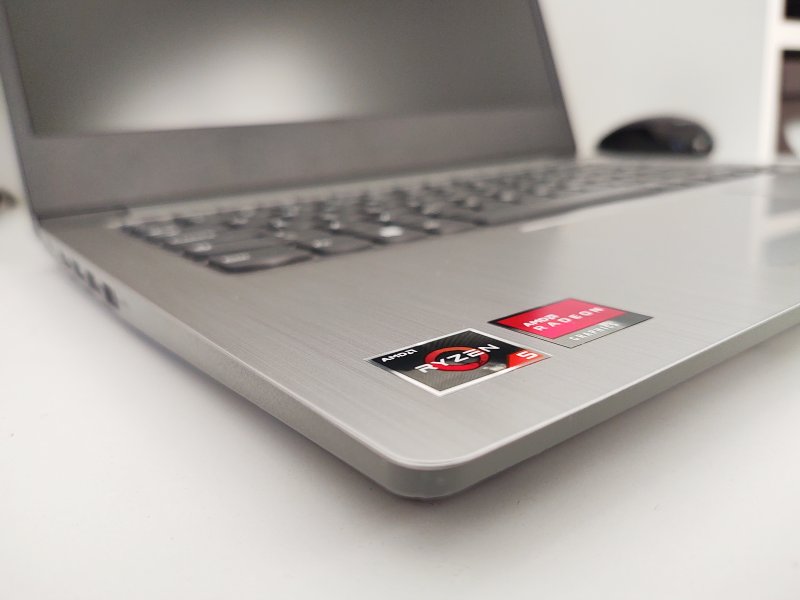
Specifications
This machine is a mid-range general purpose laptop. It's equipped with a 4-core, 8-thread AMD Ryzen 5 3500U processor, clocked at 3.7 GHz, with integrated AMD Radeon Vega 8 graphics, plus 8 GB 2400 GHz DDR4 memory. The hard disk is a relatively small 256GB M.2 NVMe, which should promise good I/O performance. But we will ascertain that a bit later.
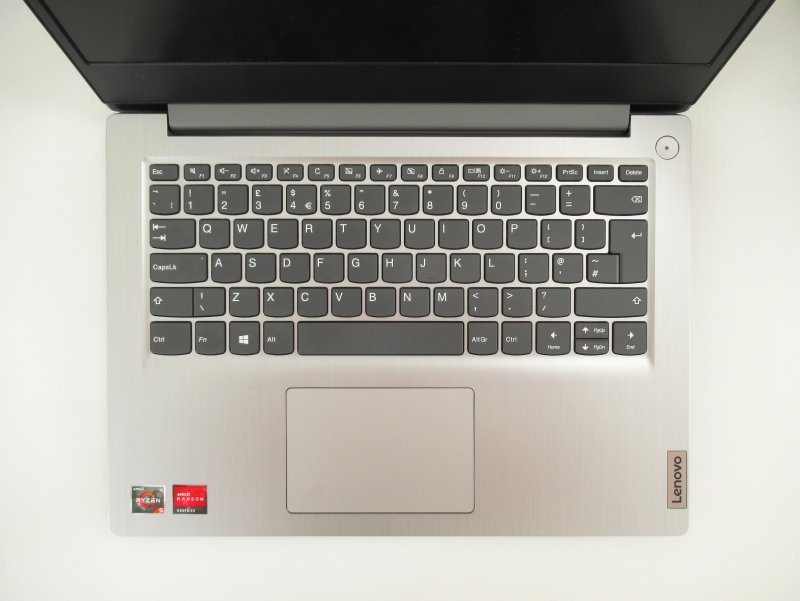
Stretched 14 inches diagonally, the screen resolves 1920 by 1080 pixels, and radios wise, you get an Atheros QCA6174 802.11ac Wireless card and Bluetooth 5.0 adapter. There are one USB 2.0 port, two USB 3.1 ports and an HDMI port on the left, a multi-functional card reader and 3.5mm audio jack on the right, plus a 65W power adapter, which is very similar to what I've seen with most mid-range Lenovo machines.
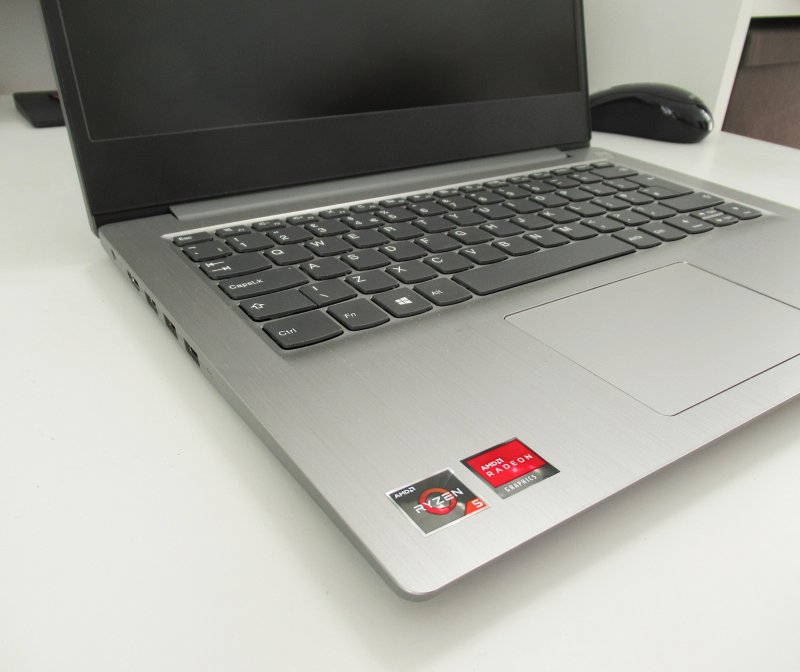
Ergonomics
Now, let's talk about the ergonomics a bit.
The laptop is very pretty. Brushed aluminium case, good grip (no over-smooth, rounded edges), sturdy feel. In comparison to various other machines I've owned or used, it's not as solid as the T Series range, but it feels more rugged than either my serious-use IdeaPad Y50 or the test-use G50. Definitely feels more upmarket, so to speak.
The screen comes with a privacy flap for the webcam - a first I've seen since buying the little Asus eeePC back in 2009. This is very convenient, and probably a nod to the privacy abomination that is the modern Internet.
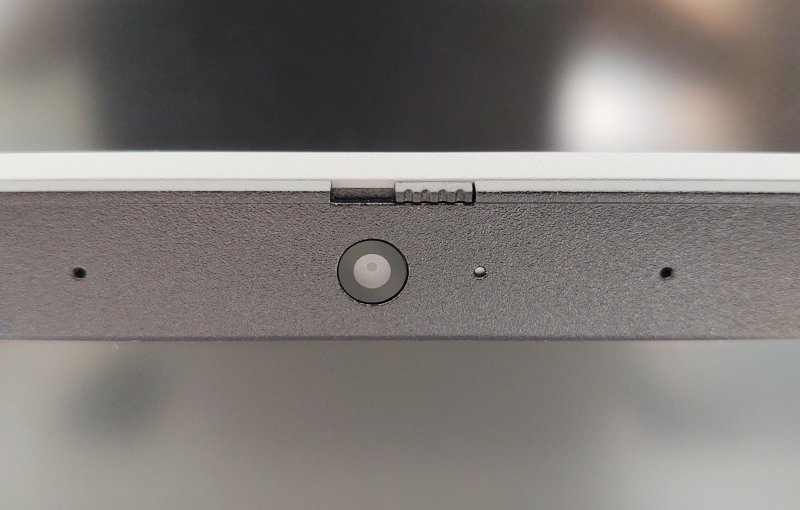
Keyboard. Not bad. It's relatively firm - and I like firm keyboards. If you type a lot, you want firm keyboards, because the firmer the keys, the less power you actually need to invest in typing precisely. This may sound counterintuitive, but as someone who writes more than a million words a year, trust me. Firmness wise, it's got a better feel than either of the two IdeaPads, but it's not quite as firm as say my old Asus VivoBook or the Slimbook Pro2. The key spacing is fairly decent, though.
However, there are problems. I couldn't get myself an American-layout keyboard - the only acceptable layout if you ask me, my multi-lingual skills notwithstanding - so I had to do with a British one. And right then, you "hit" a problem - with a small Enter key, and the backslash character just next to it (if you use a US layout, then you end up having two backslashes). Muscle memory, you keep hitting that way too often. Likewise, the arrow keys aren't good - the up and down arrows are tiny, while the left and right arrows are normal-sized. This is absolutely weird, because if they were all the same size (small), your hand might get used to it, but this inconsistent half-size full-size mix is simply wrong. All in all, this could have been a very decent keyboard, but the real issue is the small Enter and the arrow keys.

Peripherals. All the USB ports are on the left side. One could say on the port side! Ha ha. Except it's starboard, isn't it? Anyway, this means if you use an external mouse, as you should, you need to wind the cord behind the laptop, where the hot air be blowing. Not ideal, but not too bad either. The power adapter is no longer USB-like that you get for most Lenovos, it's a slim, round one. Pointy, no, rounded.
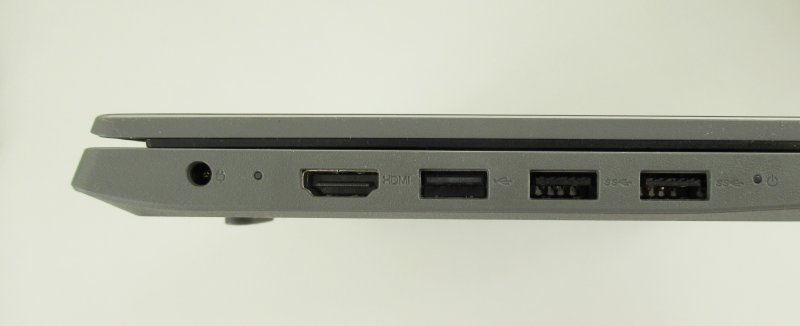
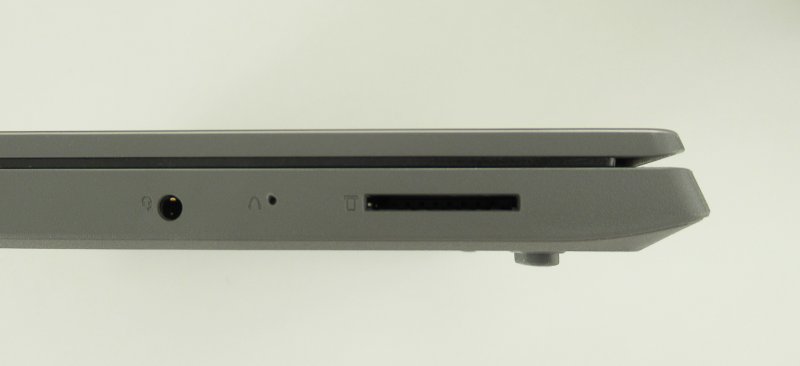
Hardware quirks. The laptop comes with a Flip to Boot option enabled in BIOS. This means, you open the cover, and the machine powers on. I find this wrong, so I toggled it off. Similarly, the Fn Hotkey buttons are enabled, so if you press F2, you won't get a file rename, you will lower the system volume. I changed this, too. In general, the BIOS is simple and easily accessible - no need to panic hit F2 or Del, a single F2 works just fine. You also get Virtualization enabled by default, you can configure a hard disk password, and you can disable Secure Boot, if you like. For testing purposes - especially with Linux, I left it on (for now).
Screen, audio and touchpad - we will touch [sic] on those once we get to boot different systems. To wit.
The Windows 10 experience
Let me walk you through the setup, more or less sequentially. A few screenshots will definitely be out of their expected chronological time, but this is because I'm always doing a few things in parallel. But if something looks confusing, or if you need more details, have a look at my Windows 10 tweaks guide. There.
Booted the box, first run config. Cortana started narrating. No. Mute. Account setup - I didn't have any network configured, which allowed me to create a local account, as one should. I was asked about a dozen questions on speech and typing recognition, advertising and such. Two things annoyed me quite some. One, if you go for non-personalized ads, the message says: you will still get the same amount of ads, only they won't be tailored to your personal needs. My question is, why do I need ads to begin with? On a desktop? Two, many things can be toggled off, but there is no switch for Cortana, although it simply won't work if you use a local account.
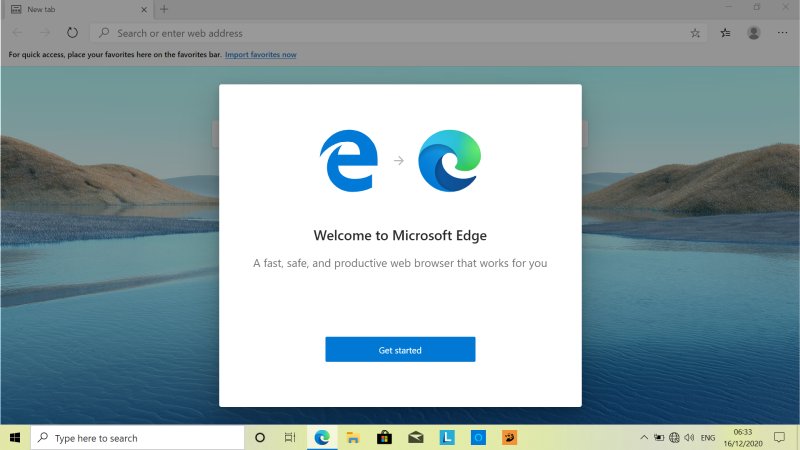
This is what you see when you login the very first time. Aggressive advertising does not work, folks.
Inside the desktop, I noticed a bunch of promo stuff in the system menu. I decided, before connecting to the Internet, to go through the Settings and turn off all the silly, low-IQ features that are designed for the ordinary ape. I toggled off pretty much all and every setting I could think of, including background apps, the use of various sensors, access to different resources (like contacts, calendar, etc).
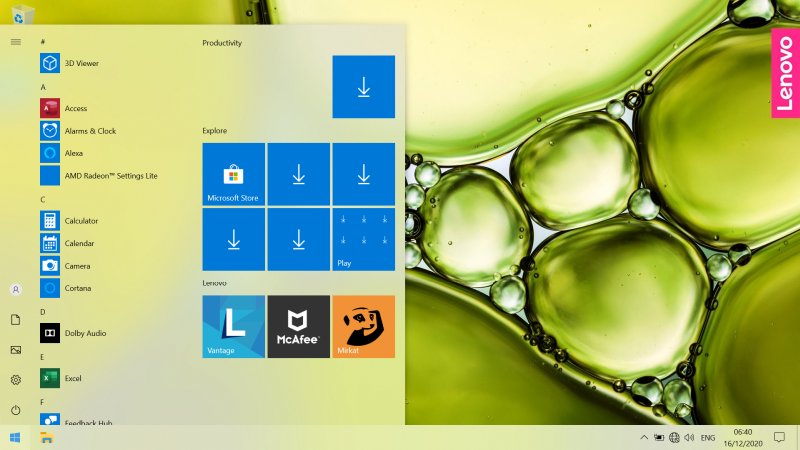
Nothing like a bunch of application names one rarely or never hears of to inspire confidence with the user.
I then disabled the anti-virus protection, because it's the wrong way to do things. I decided not to fiddle with the updates too much, taking a deliberate choice to see how silly and annoying the "automatic" functionality will be. But I did defer them for several weeks, and I did set up the so-called Active Hours.
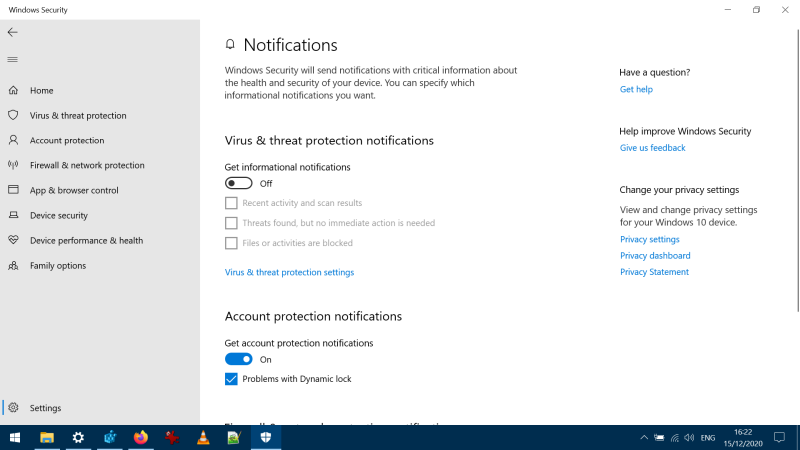
S mode shenanigans
Next I wanted to launch the Registry Editor to neuter the online/Bing search functionality in the menu. And here I hit my first really big problem.
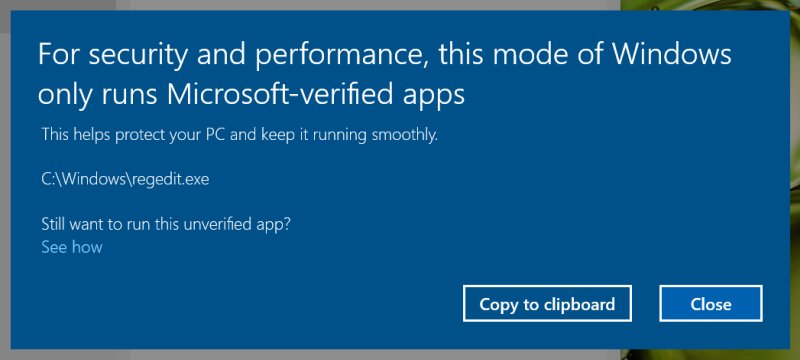
Apparently, the laptop comes with Windows 10 Home in S mode! This isn't advertised on the product box, and this annoyed me fiercely. The S mode is a special version of Windows 10, designed to only work with signed applications available through the Microsoft Store. Hint you can actually configure your own machine this way through the Exploit Protection framework. Speaking of which and talking about anti-X whatever software, the framework is the right way of doing security, this whole S mode thing notwithstanding.
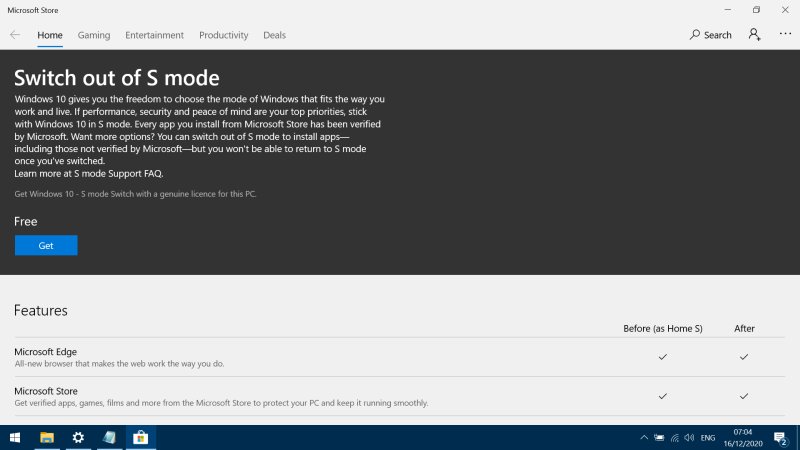
The S mode limitation not only applies to "apps" - it also prevents access to core system binaries like cmd.exe and regedit.exe. This is awful.
You can disable the S mode. You need to launch the Microsoft Store - and then "get" the special unlock "app" that simply turns your Windows into an ordinary Home version. But it gets better. To do this, you need to sign into the Store. If this is a "clever" way of making people use a Microsoft account with their Windows 10 installation, then we need to redefine the word clever.

I used my ancient account from my Lumia days, disabled the S Mode, and then signed out of the Microsoft Store. The one and only use I will ever have for it.
You see, at this point, you may say - he's anti-Microsoft or whatever. No. I even own a couple of Microsoft shares, which will hopefully one day offset the pain and nonsense I have to deal with here. As you most likely remember, I was one of the most ardent fans of Windows Phone, and I really loved the whole experience, including the Store, on the phone. Awesome. Burned once, never again. More importantly, on a practical level, an online store is only as good as its application portfolio. I would not mind being "locked" into the Microsoft Store, if and only if it offered the same range of programs and functionality like the ordinary x86 world. But it does not. I can't get 99% of the software I need from the store. It just makes no sense.
Once I connected to the Internet, Windows finished its setup. This included some silly promotional nagging.
The really annoying part here is that I already uninstalled a whole bunch of pre-bundled apps before connecting to the Web, and still I got "offers" for stuff that I don't need and/or have explicitly removed moments earlier.
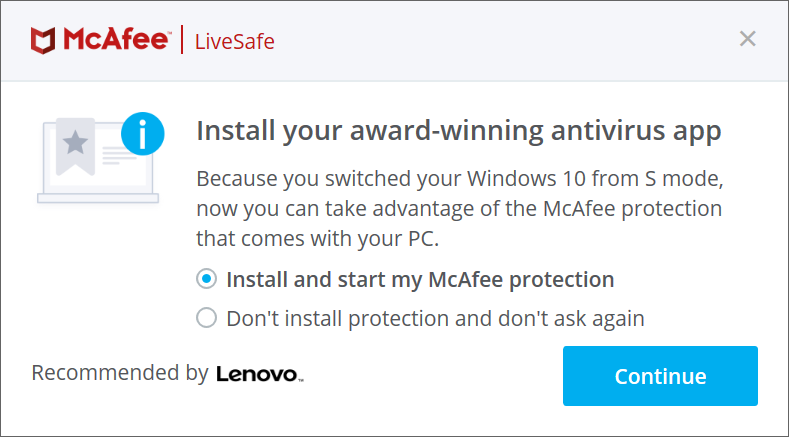
This happened AFTER I removed the placeholder app for the anti-virus.
On the plus side:
- The pre-bundle is relatively tiny.
- The removal of the OneDrive app is easy - you used to have to manually delete Explorer leftovers, not this time. No nagging, nothing. Very nice.
- The startup list is tiny - there was only one non-default application there, the Lenovo Vantage utility.
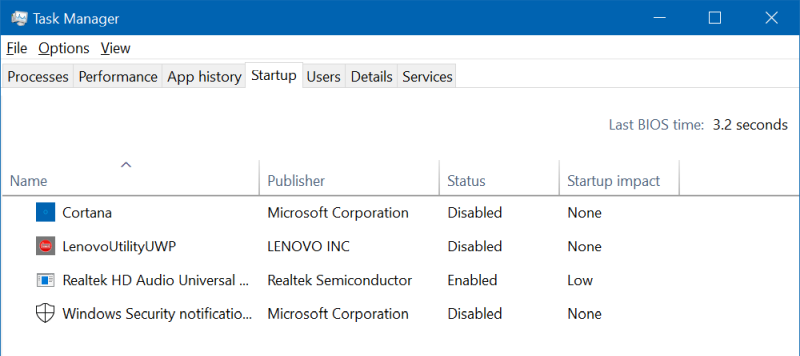
Updates and last-configuration
Overall, I must say I was surprised by how smoothly the setup went. There was no recursive begging or pleading, no settings being randomly undone, or anything like that. The updates also completed fairly smoothly, and by that I mean: the laptop did get stuck going down on restart, and I had to hard-power it, but after that, it booted fine, there were no errors, and the updates cycle finished successfully.
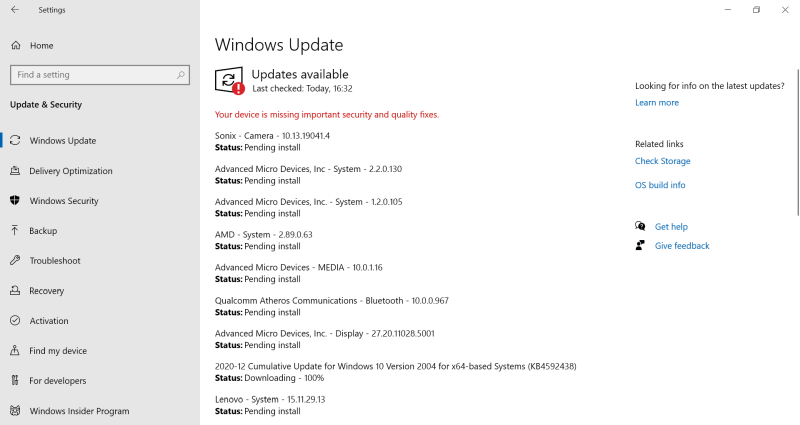

Lenovo Vantage did pop up once, despite being disabled. This utility allows you to tweak power management, upgrade firmware, and a few other things. Not bad, but the problem is, the application comes with a lot of promo/marketing features. I see no reason why these should be included with basic system functionality. So I removed it. If I need a firmware update, I can do it myself, and just download the firmware from the official website.
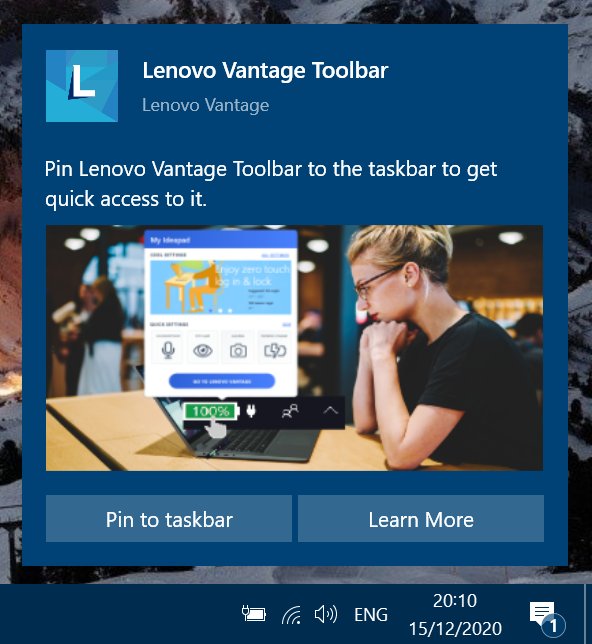
Toolbar? Is this 2003? Also, at this point, there should be no Vantage process running. But.

Now, after I removed it, I noticed in the process table (Task Manager) about 20 odd processes with the name Lenovo.Modern.ImController.exe. Weird. Seems like these are part of the underlying service that powers Vantage. Well, I wasn't happy, so I went into Add/Remove programs, and uninstalled the Lenovo utility software. Once it was gone, the process count down went quite a bit, but more importantly, the CPU fans went quiet, too. I do have to say there's a noticeable difference in idle behavior with and without this utility and its associated services running.
I installed a few applications - Firefox, IrfanView, VLC, Notepad++. Windows complained only once about the image file association, and didn't nag me about the whole Firefox vs Edge usage. Speaking of images, I used the snipping tool to grab screenshots until I had IrfanView installed. Oh was this cumbersome. Some other tweaks, and basically I was done. The whole thing took about two hours.
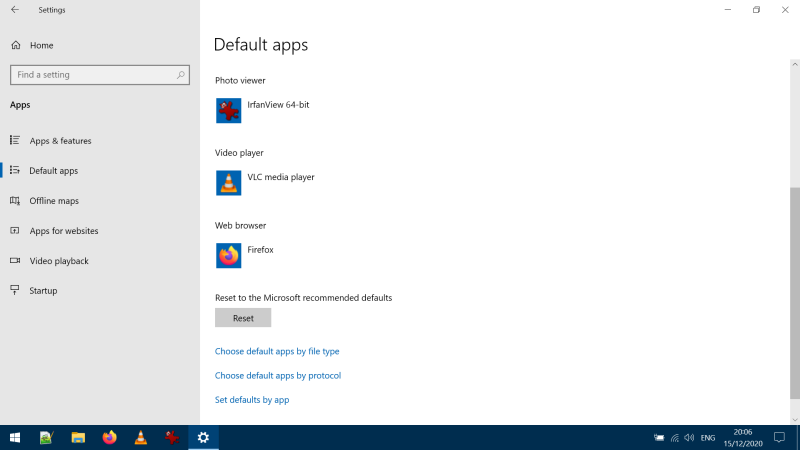
Some desktop screenshots
With fancy wallpapers and whatnot, sort of ready for use and all that:
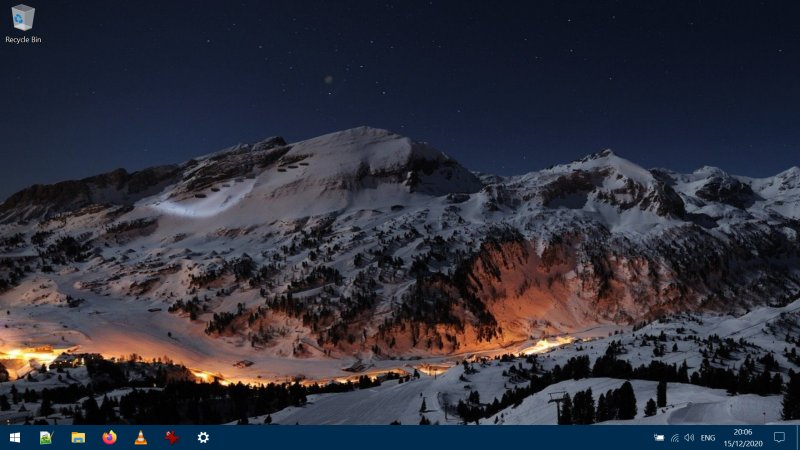
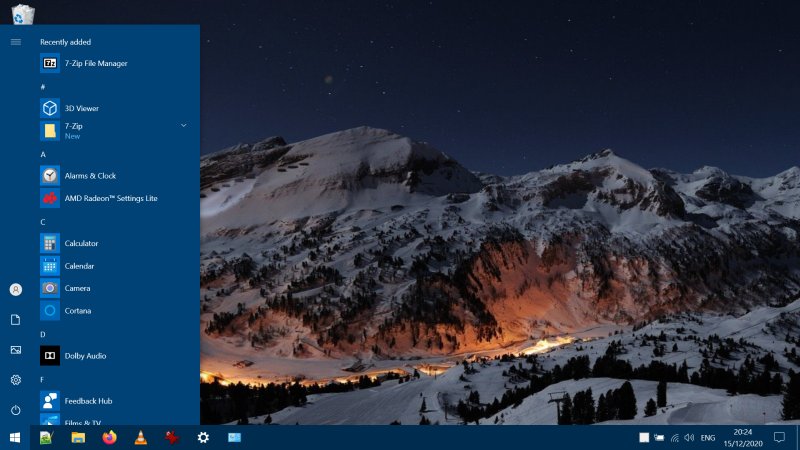
Ergonomics, display scaling
Now, I can talk about the other elements of the laptop:
The display is so-so. I think this is the most "visible" differentiating factor between less expensive and more expensive laptops, in general. The screen quality seems to be average. The colors are a bit washed out, there's too much brightness, i.e. the screen is glaring, and if you change your viewing angle even a little, the color spectrum changes dramatically. I had to recalibrate the screen gamma.
I also played with the scaling factor. The default scale is 150%, which means the FHD resolution of 1920x1080px effectively becomes 1280x720px in a way. But the results are significantly better than with the 100% or 125% scale. On these two, the glaring effect is even more noticeable, and the fonts feel thin. The 100% scale is also way too tiny for comfortable use.
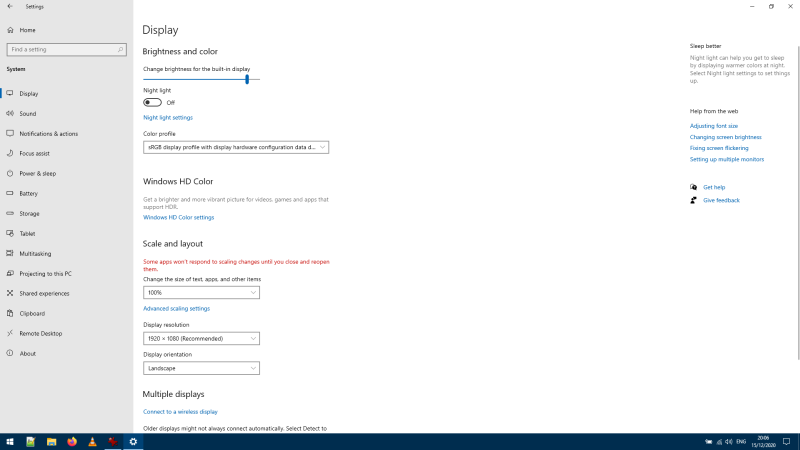
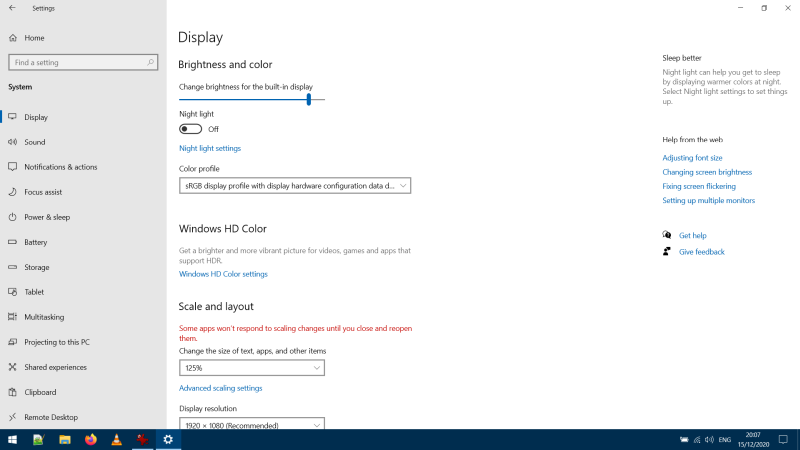
The 150% settings works the best.
The touchpad is a bit sluggish. It's very similar to the other two IdeaPads. I know you can change the acceleration and delay, but it just feels slippery. I like touchpads to be more "grainy" if this is the right word, so you don't need to be too gentle.
The audio quality is average. The sound is okay, but it doesn't have the depth that I'd expect.
Performance, battery life
In this regard, I am quite pleased with the machine. The performance is reasonable if not outright stellar, NVMe storage notwithstanding. With low usage and brightness set to 50%, the battery gives you about 4 hours worth of juice, which is sort of decent. But then, you can play around with the power plans - although only two plans are available, so I'll have to do some more digging to figure out what gives in the long run. The boot sequence takes only about 8-9 seconds to a fully functioning desktop. There's no fast startup/hybrid boot option.
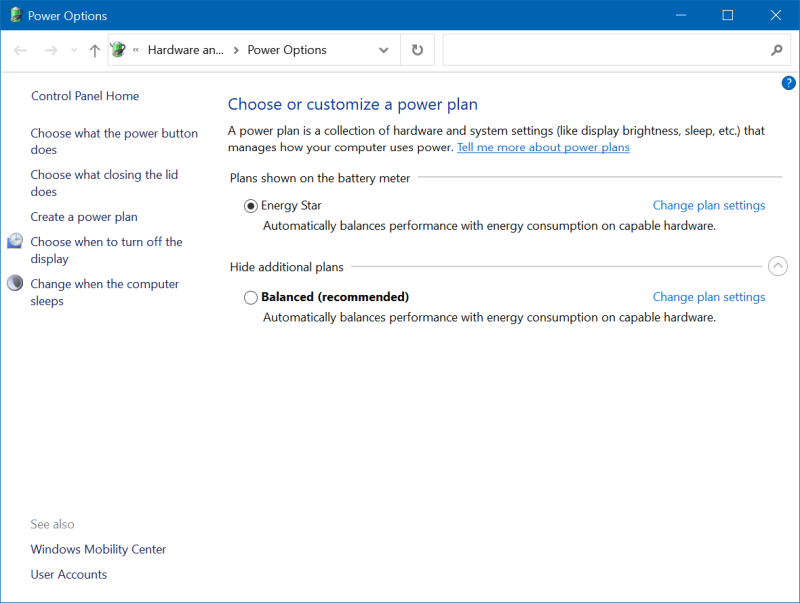
The Linux experience - triple boot
Now, the extra fun part - hopefully. I decided to change the disk layout so I could accommodate two extra Linux installations. I decided to try two operating systems as my first attempt - Ubuntu 20.04 and Kubuntu 20.10. Now please note, for full transparency, since I'm affiliated with the Ubuntu effort, I will not go into any major details there, to avoid any bias or conflict or interest. I will only mention a few small details, and reserve most of my judgment and critique for the Kubuntu part of the experience.
I booted into Focal, and repartitioned the hard disk:
- Shrank the NTFS partition to 100 GB.
- Created two Ext4 partitions, 100 GB and 50 GB in size in the freed-up space.
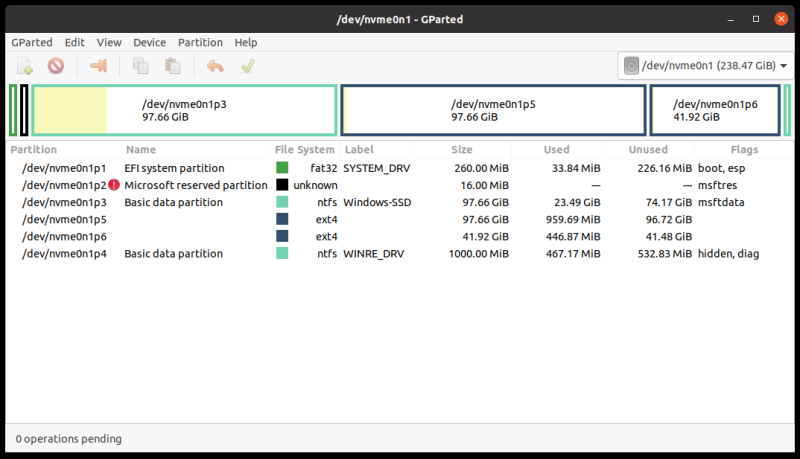
The disk also has a UEFI partition, and two small system partitions, which I assume are part of the OEM image and possibly factory reset functionality. I didn't touch those, although the partition layout is a bit odd visually, as p5 and p6 reside before p4, so to speak. This is a tiny quirk, but it could make your OCD glands itch.
I installed Ubuntu first, then Kubuntu. Focal wise, some interesting observations:
- No issue with Secure Boot.
- All the hardware was correctly detected and initialized.
- The system does not use or need any proprietary drivers.
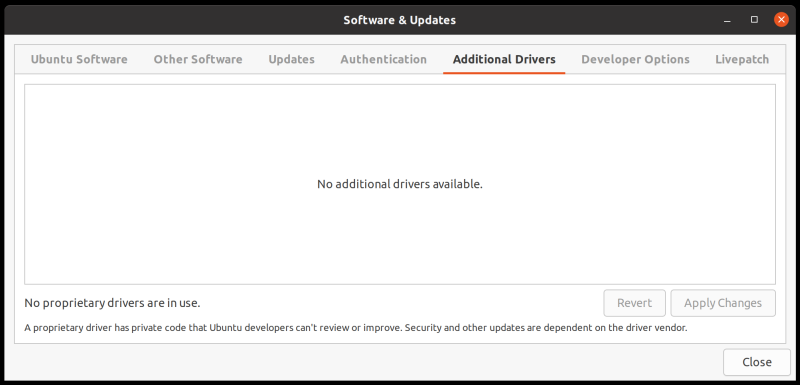
- The performance is decent - and better than in Windows 10.
- The default 100% scaling in GNOME is relatively decent - better than Windows 10 by default.
- The 125% scaling in GNOME works quite well, and the visual clarity and usability is good.
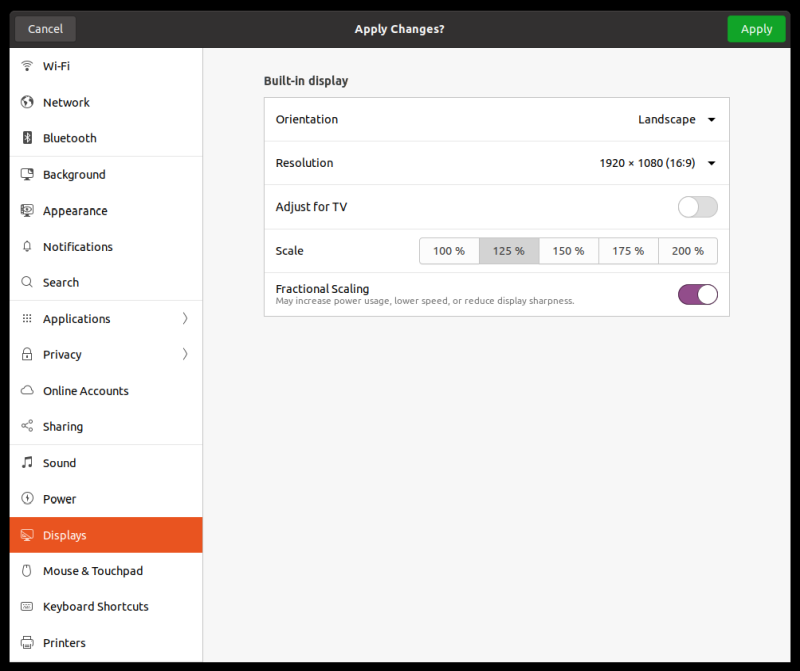
The Kubuntu run
Here, I will give you far more details on the experience and the outcomes.
The installation went fine. It took about 15 minutes overall. If you want to use third-party drivers, you also need to configure Secure Boot. You cannot choose a weak password - you need at least eight characters. This means, once the system is installed, you will see the MOK Management screen on next reboot, similar to what I've mentioned in my openSUSE Leap 15.2 review. But you can just skip it, and continue using the system normally.
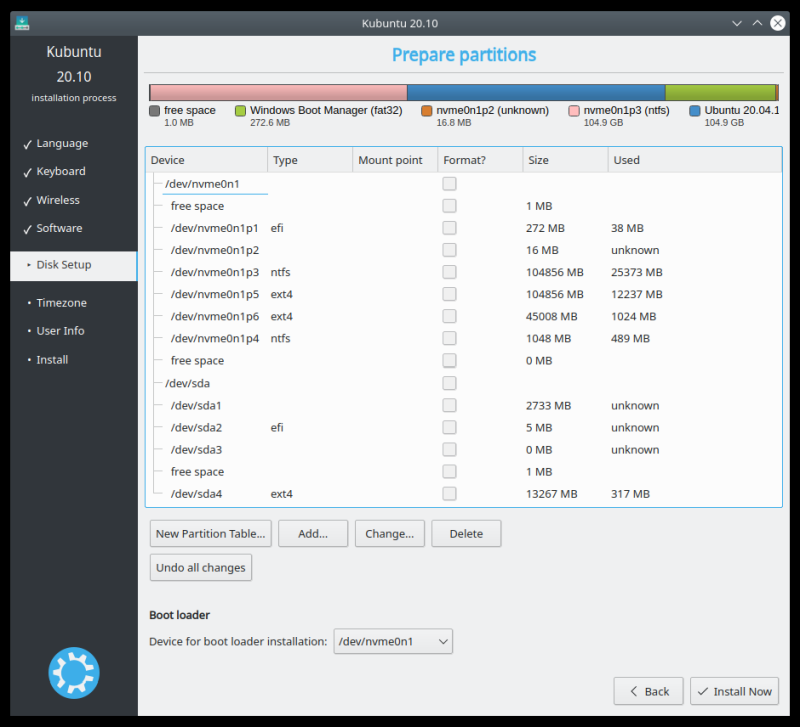
After the installation, I encountered a whole bunch of quirks:
- The language locale was wrong - it was set to a regional dialect rather than En(US) as I always use. Try it yourself. Go for Canada, UK or South Africa, and see how the keyboard layout is wrongly adjusted to the timezone, irrespective of your choice earlier in the installer. Changing to the right language didn't work outright, the logout/login wasn't enough - I had to reboot.
- The Wireless password wasn't preserved, but more annoyingly, the Wireless list kept jumping so I almost tried connecting to a wrong network twice. I then got a double password prompt, and KWallet only kicked into action on second re-connect.
- Similarly, Samba credentials weren't saved right away, I had to do it twice, possibly due to KWallet coming late to the party. Samba performance wise, Kubuntu did 11-12 MB/s to Windows' 25-30 MB/s.
Display scaling
This is a very interesting one. I praised the HD scaling improvements in my Plasma 5.20 article, and here, you get a pretty decent experience overall. Again, I had to reboot to get the full effect - with the logout/login, the desktop was correctly adjusted, but the panel and the menu were not. After reboot, the panel still stayed small, and I had to manually change its size. Other than that, the scaling works well, and it is consistent across the system.
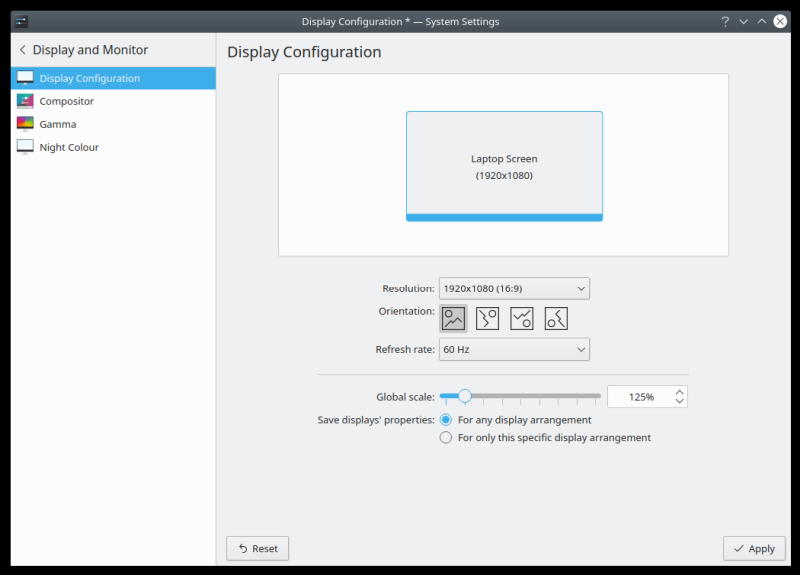
More importantly, it looks great. I didn't need to change the screen color calibration like in Windows - you do have the Gamma program in KDE, should you wish to do that. However, I did need to lower the brightness to about 80-90% of the max value for comfortable usage. This is the first time ever, because I normally use screens at 100% brightness on laptops. Like ever. That said, the overall look & feel in Kubuntu, especially with the scaling set right, feels superior to Windows.
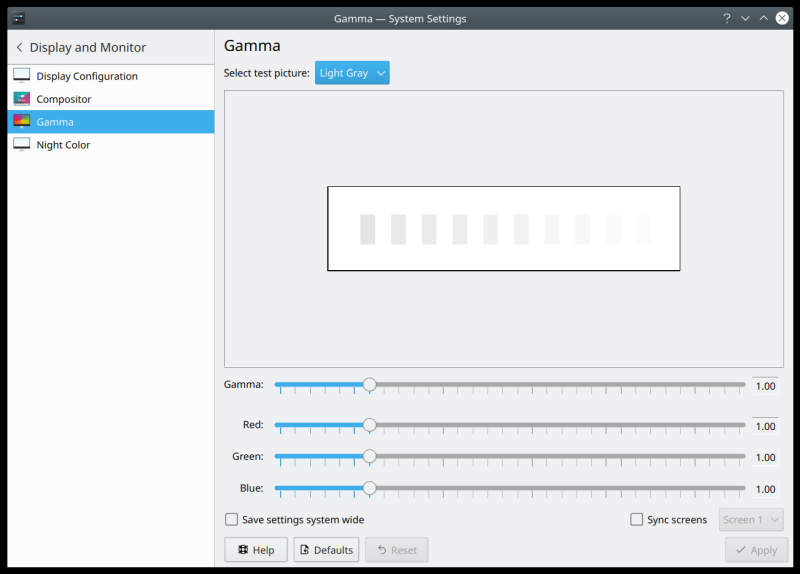
Real problems!
I did encounter several big issues:
- After changing the scaling factor, there would be horizontal white (or black) lines in Konsole. As it turns out, this is a direct result of the scaling change - and a bug that was supposedly fixed in Plasma 5.12. Typically, we hit regressions all over again. This can be fixed easily, but since this article is already way too long, I'm going to outline this in a separate tutorial.

- There were several crashes - ironically, AFTER I ran updates. Yeah.
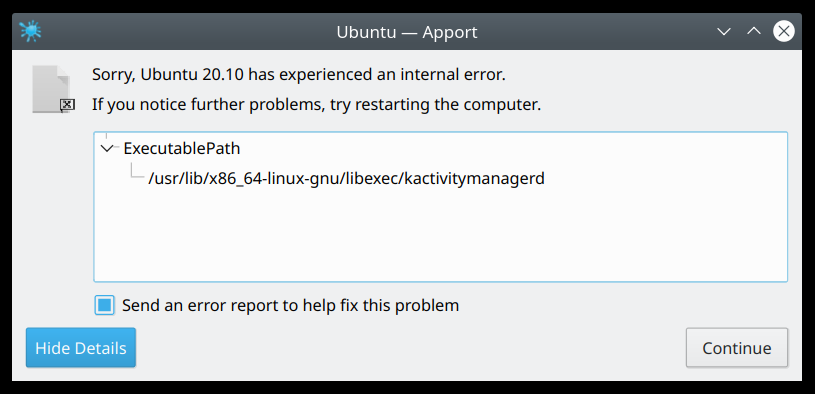
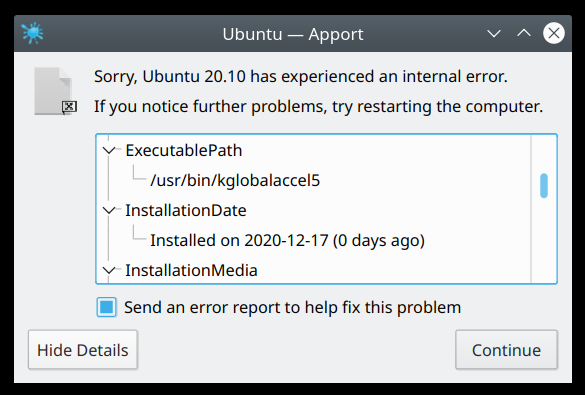
- But the big, big problem was - I had no microphone. Or rather, if I went into the audio settings, I could choose either speakers or microphone but not both at the same time. This led to about two hours of life spent searching forums, tweaking the ALSA and PulseAudio settings, three dozen changes before I finally had it working correctly. First, I must say massive kudos to the folks who originally tackled this. Second, there will be a separate tutorial for this, oh definitely.

All in all, this was predictable - I've almost never had a 100% trouble-free Linux experience in laptops, especially when it comes to hardware. I thought this was some silly driver issue, but as it turns out, this is entirely a software configuration niggle. PulseAudio to be exact, but more details to follow.
Performance, battery usage
The speed is phenomenal. Kubuntu 20.10 is very fast, predictably Plasma, and on this particular hardware, it runs really well. It's no slouch on the 2015 G50 with its i3 processor and mechanical disk, so you can imagine what gives here, NVMe included.
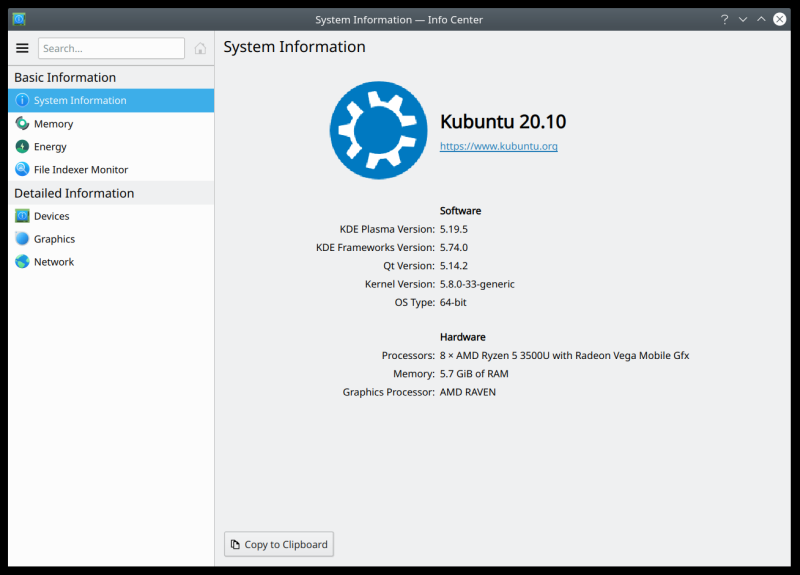
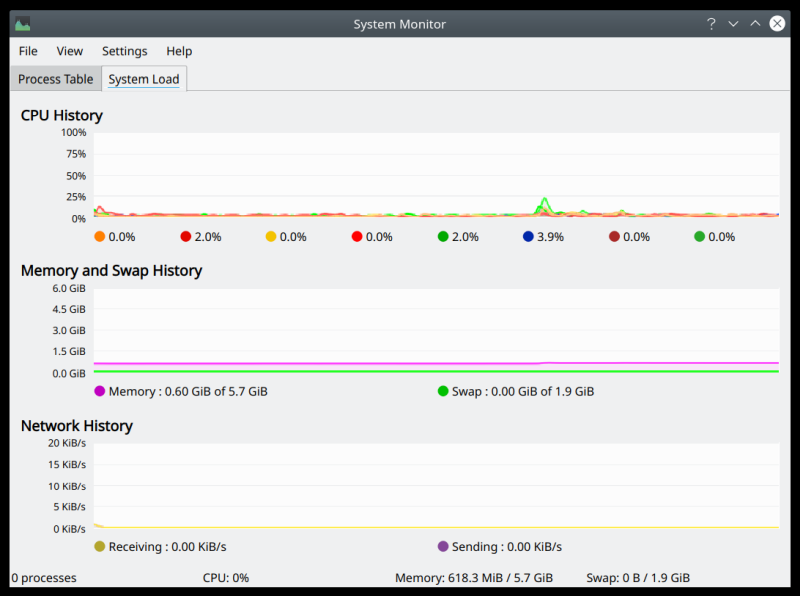
I noticed that the system only reports 5.7 GB RAM - I guess the rest is used by the graphics perhaps? I did load a bunch of HD videos and played them, and the CPU utilization in VLC was only about 1-2%, which is similar to what you'd see on a typical desktop with a discrete graphics card, plus properly enabled hardware acceleration. So, things look good.
On idle, memory usage was 600 MB - a bit higher than my G50 - and the CPU ticked at less than 1%, which is very neat. But the most interesting thing is the battery usage.
I did several experiments. With brightness set to 90%, on low-medium usage, the system report about 6.5 hours or so. When I dimmed the display to half and continuing with gentle utilization, the battery reported more than 7.5 hours. This would really be, apart from my Asus eeePC, the first time a Linux distro gives better results than Windows on the same hardware.
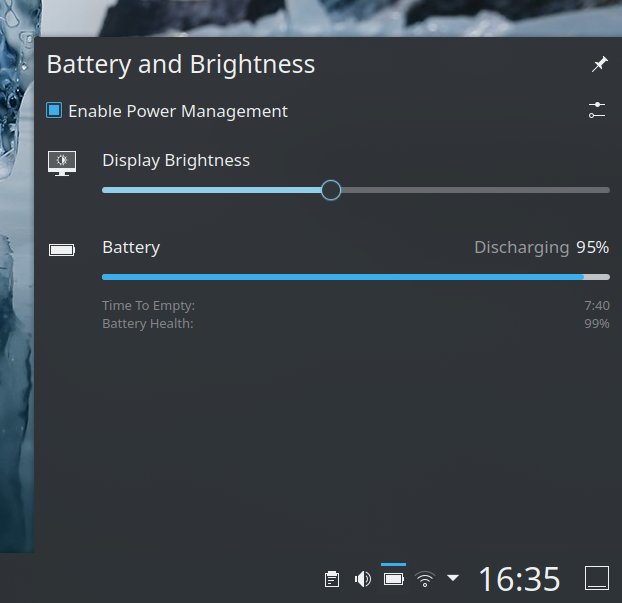
Then, I turned the brightness back up and used the laptop a bit more rigorously - say medium usage, and the battery reported about 5 hours. This leads me to believe than the figure of about 6 hours for lightweight to moderate usage is achievable, with brightness set to 50%. Either way, this is quite nice. But, not scientific, and I'll need to invest more time in seeing how this works out long term, with more consistent testing.
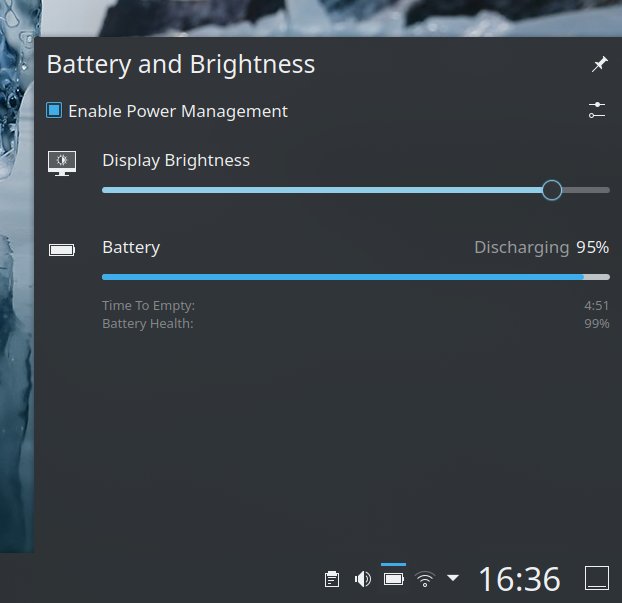
Desktop looks, other observations
So, you have a super fast system. Video playback is smooth - sans any tearing or alike. You do need to tweak VLC for Samba playback though. Even in Kubuntu 20.10, this is STILL an issue. Audio playback quality is very good, and better than in Windows. Not sure why, but I'm not complaining. Usually, it's the other way around, so I'm quite pleased.
After a little while, I had the desktop all sorted. Not much was needed, as Plasma defaults are good and friendly, the system is beautiful and consistent, and you have a wide range of decent software available at your disposal. Coupled with great speed and excellent battery life, plus acceptable visuals at 125% scaling and somewhat reduced brightness, IdeaPad 3 plus Kubuntu is a jolly choice.
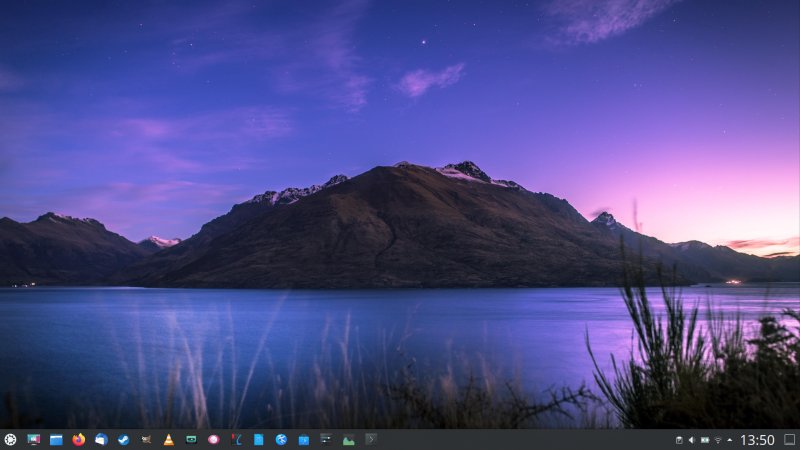
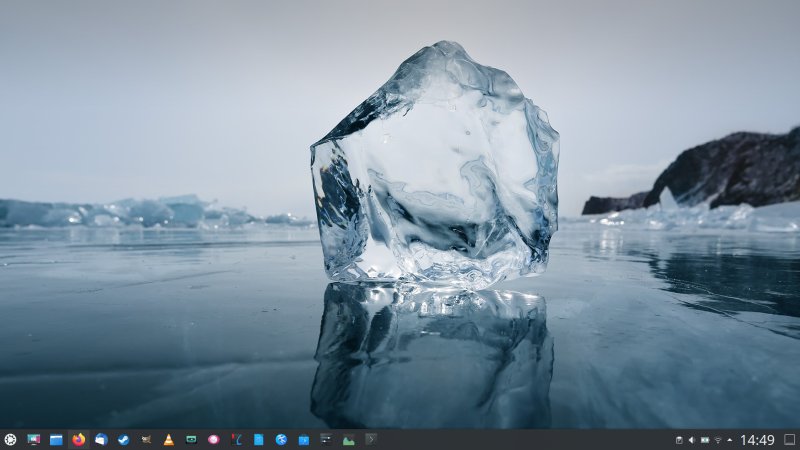
Conclusion
All right, that was long. So what gives. Hardware wise, Lenovo IdeaPad 3 is a pretty decent mid-range box, with good, sturdy feel and elegant looks, solid keyboard with a sub-optimal Enter and arrow-key layout, and average screen quality. The processor and the disk deliver a responsive experience throughout.
The Windows 10 setup was both easier and more cumbersome than it should have been - mostly because of the unnecessary twist with the rather useless S mode. Other than that, tweaking the system for sane desktop usage was simple. Linux wise, both Ubuntu and Kubuntu cooperated well with the Secure Boot. The most impressive findings are: better performance, battery life and audio in Kubuntu compared to the Windows configuration. However, Kubuntu also comes with its own minor scaling and major playback slash microphone issues.
I think this will be a rather useful test machine. The hardware will most likely work well with a variety of distributions, but some just won't run with Secure Boot, and the PulseAudio configuration will definitely be an obstacle. But hey, we shall see. I also intend to customize the keyboard layout. All considered, price and fun, too, I'm not having a bad day. This Lenovo laptop is a reasonable bargain, and you can enjoy it with either Windows or Linux. May it live long and true, and serve me well in my testing adventures. I will return very soon with additional findings, impressions after a couple of weeks, plus a whole bunch of Linux tests. And we're done here, finally.
Cheers.